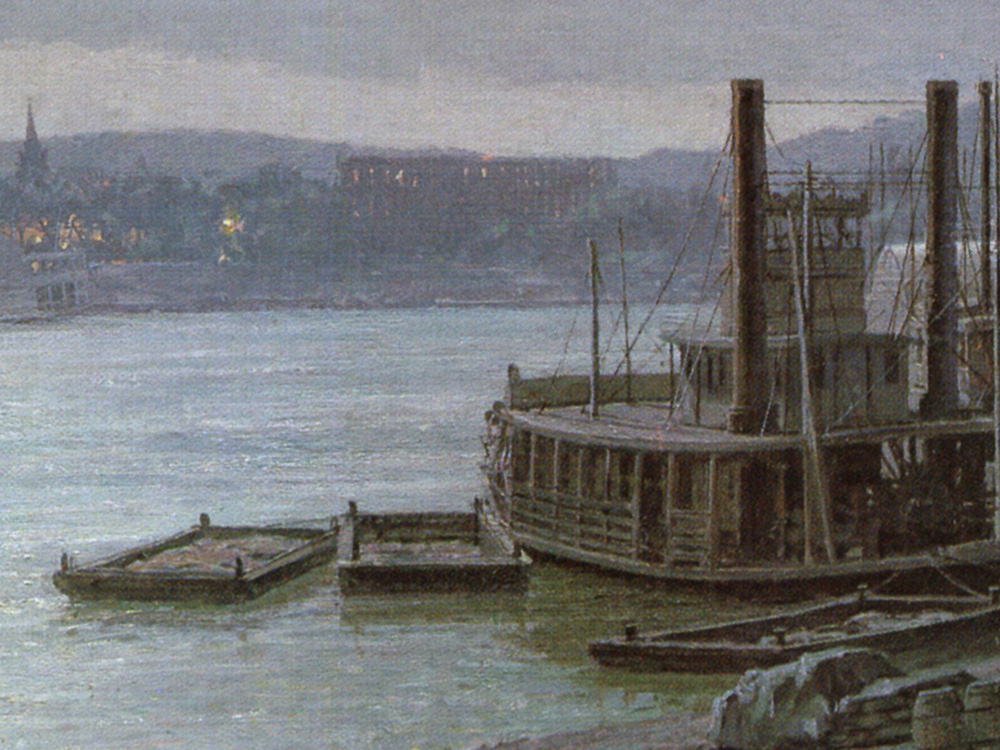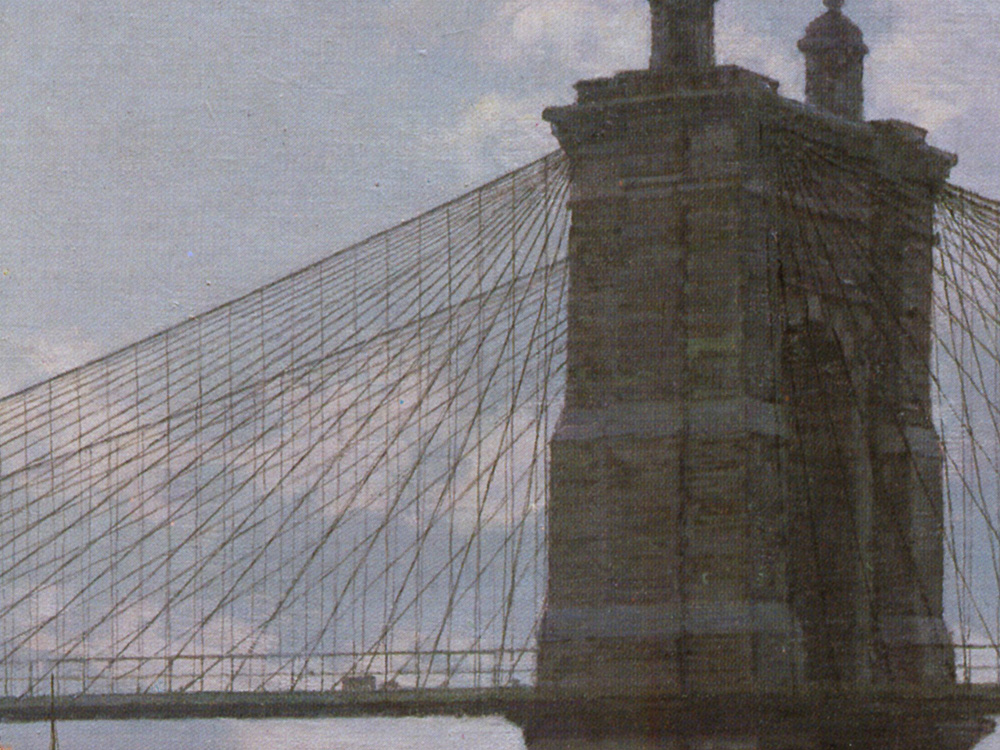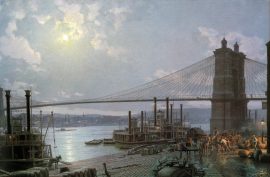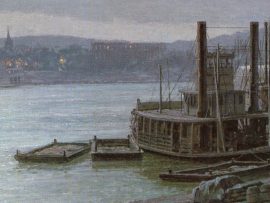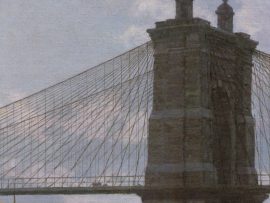Cincinnati: Moonlight on the Ohio from the Public Landing in 1880
$3,500.00
Losantiville was the first name for Cincinnati, but two years after it was founded in 1788, the first governor of the Northwest Territory renamed the river settlement Cincinnati after a group of Revolutionary War officers who called themselves the Society of the Cincinnati. Situated on the north bank of the Ohio, where the river sweeps in a wide curve to the south, Cincinnati became a territorial gateway to the labyrinth of waterways of the Mississippi and an important transshipping center for the early settlers. Today it is the third-largest city in the state and the industrial and commercial hub of a wide area.
Cincinnati, like Pittsburgh and St. Louis, two other great river cities, has a unique historic bridge right at the vital section of its waterfront. The Cincinnati and Covington Bridge, a 1,057-foot suspension bridge seen in the painting, was built by John Roebling to join the city with Covington, Kentucky.
Roebling's bridge took twenty-two years to complete and many Cincinnatians thought it would never be finished. At last, in 1867, the famous bridge opened to the cheers of 120,000 people who turned out to see the impossible dream become a practical reality. This view of the Cincinnati's public landing by moonlight is based on the dominance of the suspension bridge and the activity at night on the busy waterfront. The entire public landing section with all its waterfront buildings has now been razed and replaced by the vast concrete edifice called Riverfront Stadium.
This painting was completed in October 1982, and Toni Goffe, the manager of the Boston Gallery, asked if he could display it in the gallery. “But it's not for sale,” I cautioned. “This picture is to be the centerpiece for the forthcoming exhibition at Wunderlich and Company.” Toni said, “If we could get a hundred twenty thousand dollars for it, you'd sell the painting, wouldn't you?” I assumed the question was purely rhetorical and laughed. Three months later, I was in the gallery when a man expressed interest in Cincinnati. I asked Toni to take care of him.
When I returned to the gallery half an hour later, the man said, “I bought it.” Toni was out, and I confronted the assistant. “What's going on?” I asked. “We sold the painting,” she said. “Toni said if we could get a hundred twenty thousand dollars for it that would be okay.” My anger was tempered by the fact that they had achieved a record price for a work by a living marine artist. The record still stands.
| Weight | 6.00 lbs |
|---|---|
| Catalog: | Stobart-033 |
| Artist: | John Stobart |
| Dimensions: | 19" x 31" |
| Edition: | 750 |




